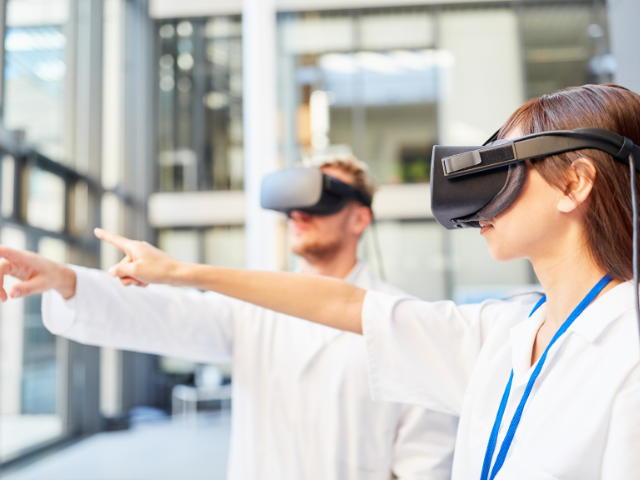Simulation Versus Clinical Experience
After the National Council of State Boards of Nursing (NCSBN) nationwide study became available in 2014, the use of simulation as a viable alternative to off-campus experiences was substantiated. Evidence within that study showed that the study “revealed that high-quality simulation conducted by trained, dedicated simulation faculty could replace up to 50% of the traditional clinical hours for prelicensure nursing students without negative impact.” according to Teresa Gore, Ph.D., DNP, APRN, FNP-BC, CHSE-A, FSSH, FAAN.
Many nursing programs in the United States, with approval from their state board of nursing, have been substituting some of their required clinical time with simulation as opposed to off campus clinical experiences. During the COVID-19 pandemic, emergency orders were implemented that directly addressed the use of simulation. Many state boards of nursing relaxed existing regulations on simulation to adapt to the evolving circumstances. Since the pandemic, many states have adopted the substitution of simulation for traditional clinical experiences from one-third of clinical time to no more than 50%, according to Gore.
Criteria is specified that the simulation experiences must be of high quality and follow the Healthcare Simulation Standards of Best Practice as set forth by the International Nursing Association for Clinical Simulation and Learning (INACSL) (National Council of the State Boards of Nursing, 2025) . Some states utilize simulation to replace up to 75% of in-person clinical time, while others use it for as little as 25%, according to simulation company UbiSim.
This refers to hands-on, interactive training sessions conducted in a controlled, physical environment such as a simulation lab/center. Use of high-fidelity mannequins, task trainers, or standardized patients (actors) would be part of a simulation scenario to mimic a real-life clinical situation for students to experience and practice on.
A newer modality, where the learner is immersed in a virtual reality environment, has now been introduced as a method for training and critical decision making. Either through a head-mounted display or on the flat screen of the computer, the learner can interact with avatar characters and props to run through a specific scenario. A range of modalities can be used for simulation learning, and often, a combination of these methods is seamlessly integrated into various courses within a nursing curriculum, according to Gore.
Most nursing programs require about 600 hours of clinical experience. Most of us would say that the quality of those experiences far outweighs the quantity. If students are placed in overcrowded clinical sites with limited hands-on opportunities, simulation led by skilled faculty and supported by effective debriefing techniques may be a more beneficial alternative.
Although it hasn’t been thoroughly studied yet, there has been evidence, including in a 2023 Clinical Simulation in Nursing article, that clinical judgment and confidence levels in simulation-trained nurses have been more than adequate to meet the needs of their places of employment. That said, these nurses may already have a level of familiarity with simulation exercises, making them more comfortable with the routine competency assessments hospitals require.









